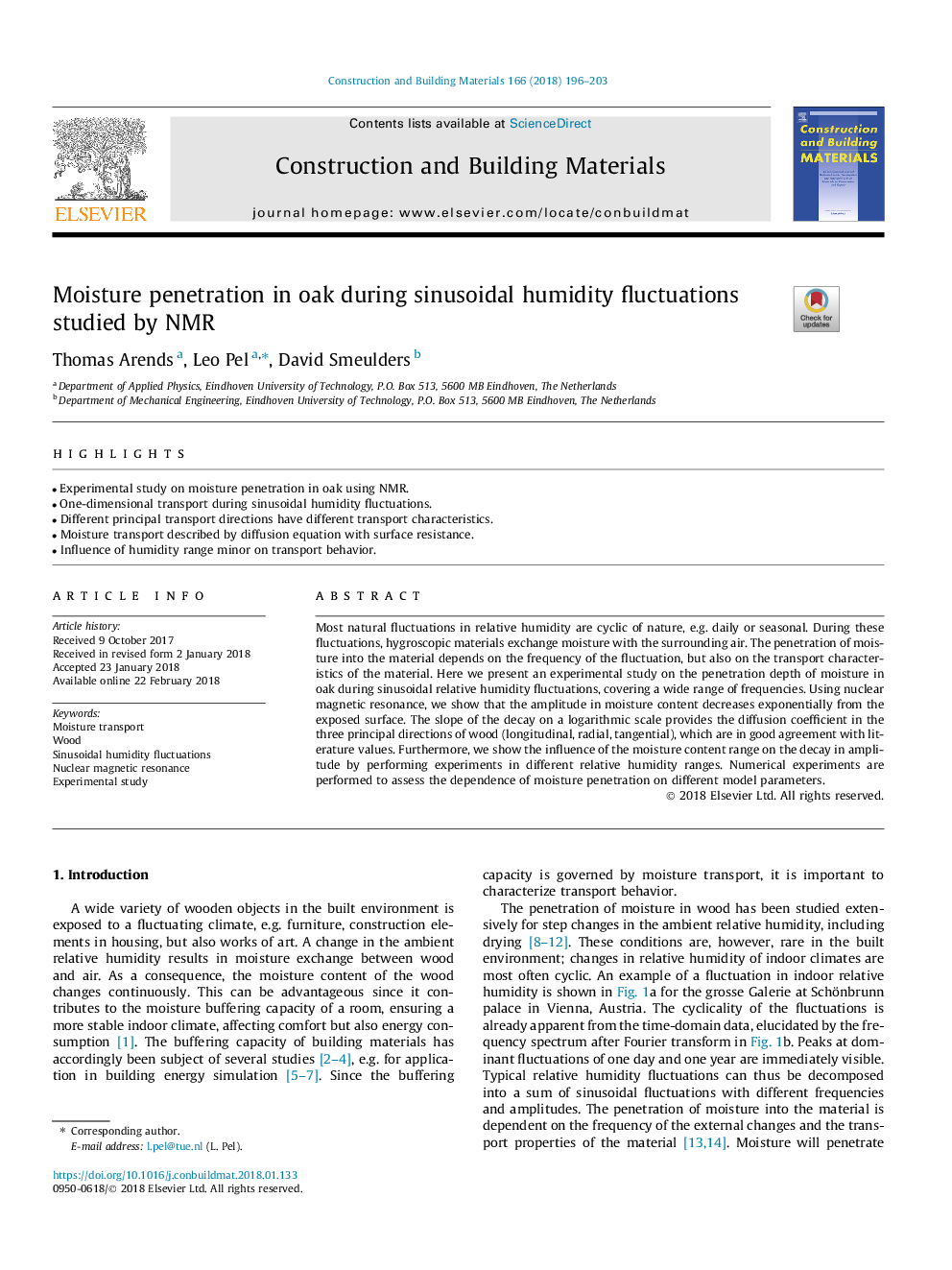| Article ID | Journal | Published Year | Pages | File Type |
|---|---|---|---|---|
| 6715194 | Construction and Building Materials | 2018 | 8 Pages |
Abstract
Most natural fluctuations in relative humidity are cyclic of nature, e.g. daily or seasonal. During these fluctuations, hygroscopic materials exchange moisture with the surrounding air. The penetration of moisture into the material depends on the frequency of the fluctuation, but also on the transport characteristics of the material. Here we present an experimental study on the penetration depth of moisture in oak during sinusoidal relative humidity fluctuations, covering a wide range of frequencies. Using nuclear magnetic resonance, we show that the amplitude in moisture content decreases exponentially from the exposed surface. The slope of the decay on a logarithmic scale provides the diffusion coefficient in the three principal directions of wood (longitudinal, radial, tangential), which are in good agreement with literature values. Furthermore, we show the influence of the moisture content range on the decay in amplitude by performing experiments in different relative humidity ranges. Numerical experiments are performed to assess the dependence of moisture penetration on different model parameters.
Related Topics
Physical Sciences and Engineering
Engineering
Civil and Structural Engineering
Authors
Thomas Arends, Leo Pel, David Smeulders,
